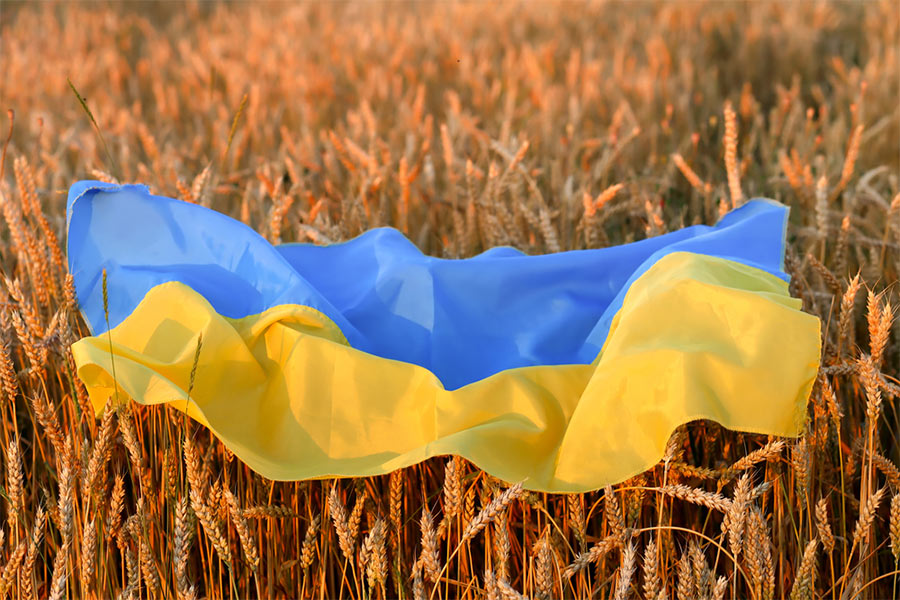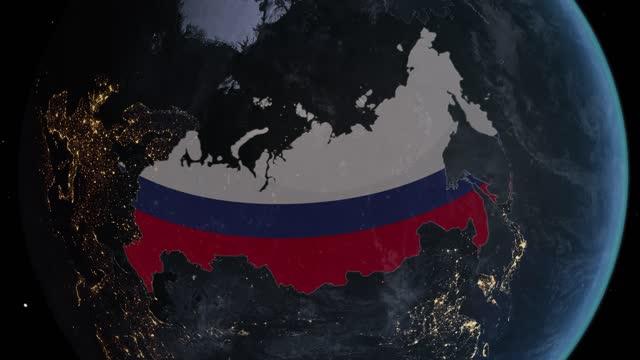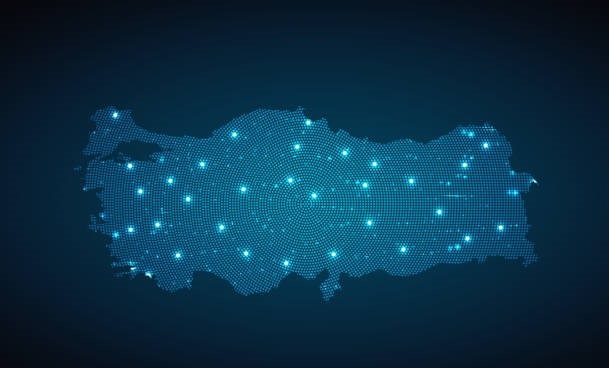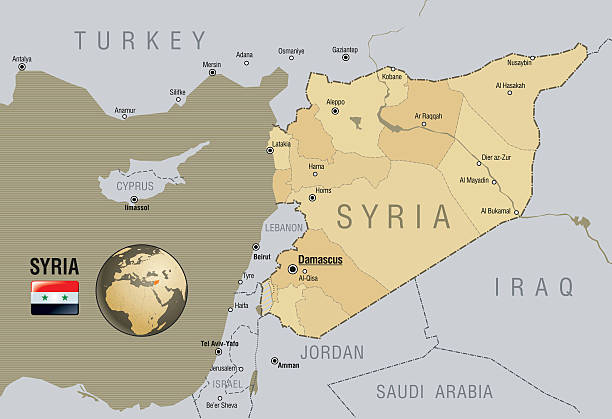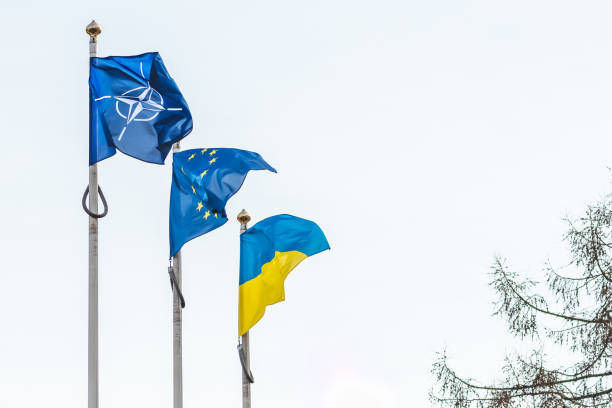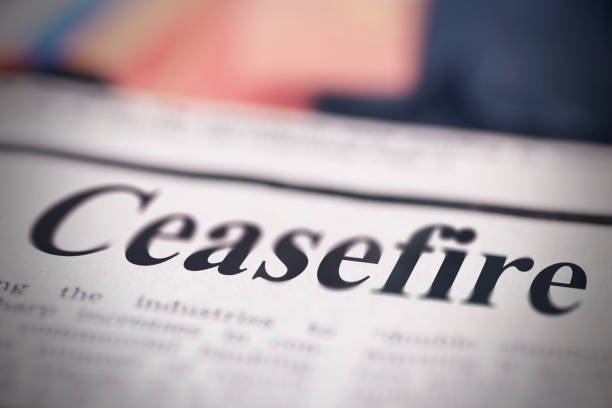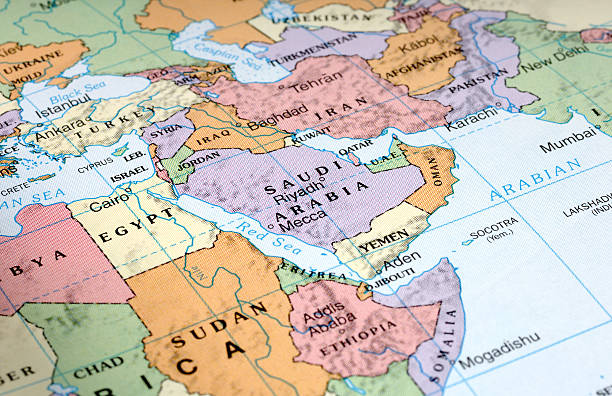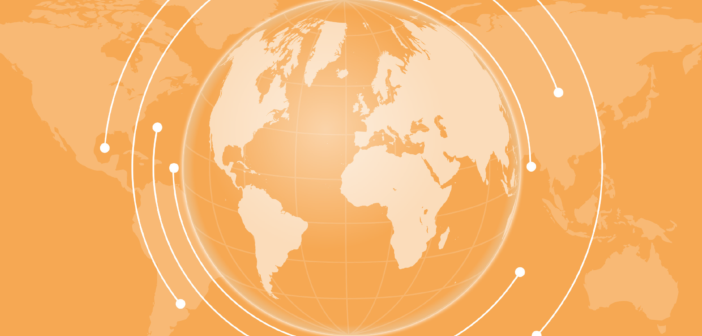
Click here for the full report
Russia Proposes a New Security Architecture in Europe and Beyond
Ali Tuygan
The year 2021 is now behind us. Nonetheless, its final act will dominate the international stage in the months to come.
On December 7, 2021, Presidents Biden and Putin had a two-hour video conference.
According to the White House readout of the meeting, President Biden focused on what he described as the “threatening” movements of Russian troops near the Ukrainian border and outlined the sanctions the United States and its allies would be ready to impose should the situation escalate any further. The Kremlin readout said, “In response, Vladimir Putin warned against shifting the responsibility on Russia since it was NATO that was undertaking dangerous attempts to gain a foothold on Ukrainian territory and building up its military capabilities along the Russian border. It is for this reason that Russia is eager to obtain reliable, legally binding guarantees ruling out the eventuality of NATO’s eastward expansion and the deployment of offensive weapons systems in the countries neighboring Russia.”
On December 15, Russia’s Deputy Foreign Minister Sergey Ryabkov met with the US Assistant Secretary of State for European and Eurasian Affairs Karen Donfried in Moscow. Russian Foreign Ministry’s press release on the talks said that “they had a detailed discussion of security guarantees in the context of the persistent attempts by the US and NATO to change the European military and political situation in their favor.”
On December 17, 2021, the Russian Foreign Ministry, made public a draft treaty between Russia and the US, and a draft agreement between Russia and member states of NATO, both of which had been delivered to the US side at the meeting of the two senior diplomats.[i]
The next day, Sergey Ryabkov told Interfax News Agency that the security situation in Europe, the Euro-Atlantic region, and Eurasia has greatly deteriorated and this has happened because of a series of concerted actions by the US and its NATO allies, which, generally speaking, can be described as an attempt to undermine Russia’s security and to create a hostile environment around Russia. He said, “Ukraine is in the focus of this policy… And the possibility of Ukraine eventually joining NATO, which some Ukrainian officials keep talking about, is categorically unacceptable to us…”[ii]
The same day, Russia announced its withdrawal from the Treaty on Open Skies.[iii]
On December 23, President Putin held his annual press conference.[iv] He had strong words for Ukraine. In response to a question, he said, “We remember, as I have mentioned many times before and as you know very well, how you promised us in the 1990s that [NATO] would not move an inch to the East. You cheated us shamelessly: there have been five waves of NATO expansion, and now the weapons systems I mentioned have been deployed in Romania and deployment has recently begun in Poland. This is what we are talking about, can you not see?”
On December 28, President Putin hosted the annual informal summit meeting of heads of state of the Commonwealth of Independent States in St. Petersburg.
Finally, on December 30, Presidents Biden and Putin had a phone call.
According to senior US officials, President Biden laid out two paths, the path of diplomacy leading toward a de-escalation of the situation, and the path focused on deterrence, including serious costs and consequences should Russia choose to proceed with a further invasion of Ukraine. President Biden also made very clear that Washington will be operating on the principle of “nothing about you without you”: no conversations about issues that are of ultimate concern to our partners and allies without the full consultation and participation of our partners and allies — which President Putin said that he understood.
And, according to the Kremlin readout of the Biden-Putin phone call, President Putin “stressed that the negotiations needed to produce solid legally binding guarantees ruling out NATO’s eastward expansion and the deployment of weapons that threaten Russia in the immediate vicinity of its borders. Vladimir Putin further emphasized that the security of any nation cannot be ensured unless the principle of indivisible security is strictly observed.”
“Vladimir Putin gave an exhaustive response to the mention once again by Joseph Biden of the possibility of imposing “large-scale” sanctions in the event of an escalation of the situation around Ukraine. He suggested that this would be a grave error, de facto fraught with the danger of a complete breakdown in Russia-US relations.”[v]
Thus, with the Russian buildup at the border, the Ukraine conflict has once again moved up to the top on the international agenda. Nonetheless, despite earlier signals, the contents of the Russian texts, or President Putin’s new year gifts to the West, were a surprise, going far beyond the borders of Ukraine, extending from the Baltic to the Black Sea and from eastern Europe to Central Asia, proposing a new Russia-West security architecture.
Prominent among those earlier signals was the long article titled “On the Historical Unity of Russians and Ukrainians” by President Putin in which he elaborated on Russian history to substantiate his choice of the title.[vi]
He said that modern Ukraine is entirely the product of the Soviet era, shaped– for a significant part – on the lands of historical Russia. He added that inside the USSR, borders between republics were never seen as state borders. But in 1991, all those territories, and which is more important, people, found themselves abroad overnight, taken away, this time indeed, from their historical motherland. He then asked,
“What can be said to this? Things change: countries and communities are no exception. Of course, some part of a people in the process of its development, influenced by a number of reasons and historical circumstances, can become aware of itself as a separate nation at a certain moment. How should we treat that? There is only one answer: with respect!
“You want to establish a state of your own: you are welcome! But what are the terms?… the republics that were founders of the Union, having denounced the 1922 Union Treaty, must return to the boundaries they had had before joining the Soviet Union…”
This was a reference to Crimea’s becoming an oblast of the Ukrainian S.S.R. in 1954, during Nikita Khrushchev’s leadership.
President Putin also said that Ukraine and Russia have developed as a single economic system over decades and centuries, that they are natural complementary economic partners. He drew attention to the contradiction of Ukraine being a country of great potential yet Europe’s poorest. He blamed this on the Ukrainian leadership. He accused them of attempting to rewrite history and referring to the period when Ukraine was part of the Russian Empire and the Soviet Union as an “occupation”. He claimed that Ukraine was dragged into a dangerous geopolitical game aimed at turning it into a barrier between Europe and Russia, a springboard against Russia. He said that Russia will never allow its historical territories and the people living there to be used against Russia.
He reiterated that Russia is open to dialogue with Ukraine and ready to discuss the most complex issues, but it is important for Russia to see that its partner is defending its national interests and not serving someone else’s and is not a tool in someone else’s hands to fight against Russia. He also argued that the Minsk process gives a real chance to peacefully restore the territorial integrity of Ukraine by coming to an agreement directly with the “Donetsk People’s Republic” (DNR) and the “Luhansk People’s Republic” (LNR), with Russia, Germany, and France as mediators. But, he said, “this contradicts the entire logic of the anti-Russia project.”
And he concluded by saying, “I am confident that true sovereignty of Ukraine is possible only in partnership with Russia. Our spiritual, human, and civilizational ties formed for centuries and have their origins in the same sources, they have been hardened by common trials, achievements, and victories… we are one people.”
In broad terms, the draft Agreement with NATO and the draft Treaty with the US made public by Moscow aim at securing a return to the status quo ante before the signing of the “Founding Act on Mutual Relations, Cooperation and Security between NATO and the Russian Federation” on May 27, 1997, which means, in Moscow’s view, that NATO members have not lived up their commitments under the Founding Act.
Notably, articles 1, 4, 6, and 7 of the Russian draft “Agreement on Measures to Ensure the Security of the Russian Federation and the Member States of the North Atlantic Treaty Organization” read as follows:
“Article 1
“The Parties shall guide in their relations by the principles of cooperation, equal and indivisible security. They shall not strengthen their security individually, within international organizations, military alliances, or coalitions at the expense of the security of other Parties.
“Article 4
“The Russian Federation and all the Parties that were member States of the North Atlantic Treaty Organization as of 27 May 1997, respectively, shall not deploy military forces and weaponry on the territory of any of the other States in Europe in addition to the forces stationed on that territory as of 27 May 1997. With the consent of all the Parties such deployments can take place in exceptional cases to eliminate a threat to security of one or more Parties.
“Article 6
“All member States of the North Atlantic Treaty Organization commit themselves to refrain from any further enlargement of NATO, including the accession of Ukraine as well as other States.
“Article 7
“The Parties that are member States of the North Atlantic Treaty Organization shall not conduct any military activity on the territory of Ukraine as well as other States in the Eastern Europe, in the South Caucasus and in Central Asia.”
And Article 4 of the Russian draft “Treaty Between the United States of America and The Russian Federation on Security Guarantees” reads:
“Article 4
The United States of America shall undertake to prevent further eastward expansion of the North Atlantic Treaty Organization and deny accession to the Alliance to the States of the former Union of Soviet Socialist Republics.
The United States of America shall not establish military bases in the territory of the States of the former Union of Soviet Socialist Republics that are not members of the North Atlantic Treaty Organization, use their infrastructure for any military activities or develop bilateral military cooperation with them.”
In January 1983 the Warsaw Pact countries -Bulgaria, Czechoslovakia, East Germany, Hungary, Poland, Romania, and the Soviet Union – had offered a non-aggression pact to the Atlantic Alliance. But after the demise of the USSR, the security landscape changed dramatically.
Poland, Hungary, and the Czech Republic joined NATO in 1999, followed in 2004 by Bulgaria, Romania, Slovakia, Slovenia, Estonia, Latvia, and Lithuania.
NATO’s Bucharest Summit Declaration of 3 April 2008 said:
“NATO’s door will remain open to European democracies willing and able to assume the responsibilities and obligations of membership, in accordance with Article 10 of the Washington Treaty. We reiterate that decisions on enlargement are for NATO itself to make… NATO welcomes Ukraine’s and Georgia’s Euro-Atlantic aspirations for membership in NATO. We agreed today that these countries will become members of NATO…”
In 2009 Albania and Croatia; in 2017 Montenegro; and finally in 2020, Macedonia joined the Alliance, bringing NATO membership to 30 nations. Today, Russia wants more than a non-aggression pact; it wants a commitment that NATO would refrain from any further enlargement, including the accession of Ukraine as well as other states. In other words, Moscow wants NATO to take a step back from the Bucharest Summit Declaration and put it into writing.
In their phone call, Presidents Biden and Putin agreed to the sequence of Strategic Stability Dialogue starting on the 9th and 10th in Geneva, a NATO-Russia Council conversation on the 12th, and an OSCE meeting on the 13th.
Considering the scope of the Russian proposals extending from political commitments to arms control measures and troop deployments, the need to take these up in three different tracks, not to mention the need for substantial consultations within NATO, a 30-member alliance, rapid progress on the diplomatic front is an illusion. In recent days the Biden administration has been busy trying to close ranks in NATO but securing consensus on what is meant by responding decisively to further Russian invasion would not be an easy task.[vii] Moreover, there are the challenges of re-energizing the Minsk process and what happens with Nord Stream 2.
Negotiations on a new security architecture could last months, years. With the shift towards détente in East-West relations during the early 1970s, Helsinki consultations started in 1972 and continued until the opening of the formal Conference on Security and Cooperation in Europe (CSCE) in July of 1973. The Helsinki Final Act was signed two years later, on August 1, 1975.
Considering its position on Ukraine’s NATO membership, it is clear Russia aims at a substantial revision of the NATO-Russia Founding Act, perhaps its replacement with a new document since the Act,
- refers to respect for sovereignty, independence and territorial integrity of all states and their inherent right to choose the means to ensure their own security, and
- says that provisions of the Act do not provide NATO or Russia, in any way, with a right of veto over the actions of the other nor do they infringe upon or restrict the rights of NATO or Russia to independent decision-making and action.
In brief, since the strategic stability talks are likely to take time in all three channels, Russian military intervention in Donbas would continue to loom, the question being “for how long?”
The standoff at the Russian-Ukrainian border reminds me of Dominic Lieven’s remarkable book titled “Towards the Flame”, Empire, War and the End of Tsarist Russia”. The following are excerpts from the “Introduction” of the book:
“As much as anything, the First World War turned on the fate of Ukraine… my statement is not as far-fetched as it seems. Without Ukraine’s population, industry, and agriculture, early-twentieth-century Russia would have ceased to be a great power. If Russia ceased to be a great power, then there was every probability that Germany would dominate Europe. The Russian Revolution of 1917 temporarily shattered the Russian state, economy, and empire. Russia did for a time cease to be a great power. A key element in this was the emergence of an independent Ukraine. In March 1918 the Germans and the Russians signed a peace treaty at Brest-Litovsk that ended the First World War on the eastern front. In this treaty, Russia was forced the recognize Ukraine as an independent country in principle and a German satellite in practice. Had the Treaty of Brest-Litovsk survived, Germany would have won the First World War. To win the war, Germany did not need outright victory on the western front. A draw in the west combined with the eclipse of the Russian Empire and German domination of east-central Europe would have sufficed to ensure Berlin’s hegemony over the Continent… The great irony of the First World War was that a conflict which began more than anything else as a struggle between the Germanic powers and Russia to dominate east-central Europe ended in the defeat of both sides.”
Thus, the worries of the people of Ukraine are only understandable. So are the concerns of the Baltic states, and Poland which experienced three partitions, once disappeared from the map of Europe in 1795 and was invaded from the west by Hitler’s Germany and from the east by Stalin’s Russia during the Second World War. These countries would see the Russian proposals as a threat. Ukraine, with the Russian buildup at the border, would see it as an ultimatum. And central Asian republics would probably view it as a reiteration of Moscow’s near abroad policy.
Nonetheless, there are those who think that history could have been written differently had the West properly managed the aftermath of the Cold War. Prominently among them is Anatol Lieven. He says, “I rejoiced greatly in the end of Soviet communism, both because of its monstrous past crimes and the extremely dreary and cynical society that it had produced by the 1980s… However, I also hoped that the end of that struggle— so amazingly bloodless compared with the apocalyptic nuclear fears that had haunted my youth — would produce reflection and self-correction in America and the West – of the crimes committed and the lies that were told; and of the militarism, hatred and paranoia that had undermined democracy at home, as well as in so many countries abroad whose people were made to suffer in the name of protecting them from communist influence or domination.”[viii]
In Russia, President Putin is at the helm, steering a steady course.
In the West, the picture is more complicated. What is clear is that 2022 will be a tough year for Western diplomacy.
Where does Turkey stand in this broad picture? That remains a riddle.
————————————————————————————————————-
[i] https://mid.ru/en/foreign_policy/news/1790416/
[ii] https://mid.ru/en/foreign_policy/news/1791222/
[iii] https://mid.ru/en/foreign_policy/news/1790948/
[iv] http://en.kremlin.ru/events/president/news/67438
[v] http://en.kremlin.ru/events/president/news/67487
[vi] http://en.kremlin.ru/events/president/news/66181
[vii] https://www.whitehouse.gov/briefing-room/statements-releases/2022/01/02/statement-by-press-secretary-jen-psaki-on-president-bidens-call-with-president-volodymyr-zelenskyy-of-ukraine/
[viii] https://responsiblestatecraft.org/2021/12/27/tragedy-of-the-victor-america-and-the-end-of-the-soviet-union/?utm_source=rss&utm_medium=rss&utm_campaign=tragedy-of-the-victor-america-and-the-end-of-the-soviet-union&ct=t(RSS_EMAIL_CAMPAIGN)&mc_cid=f26e0339b3&mc_eid=cca9360155


